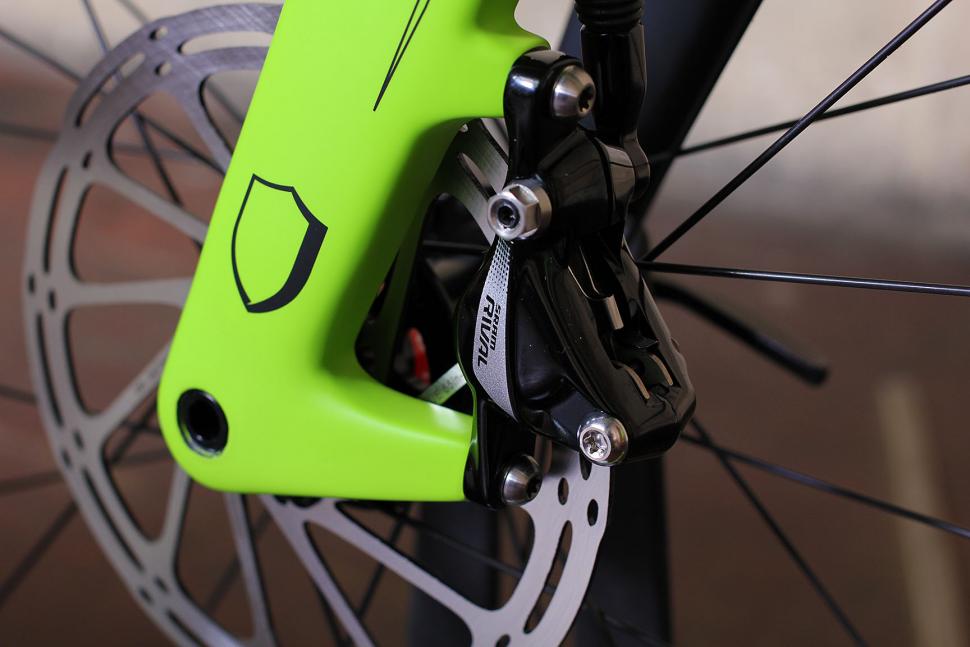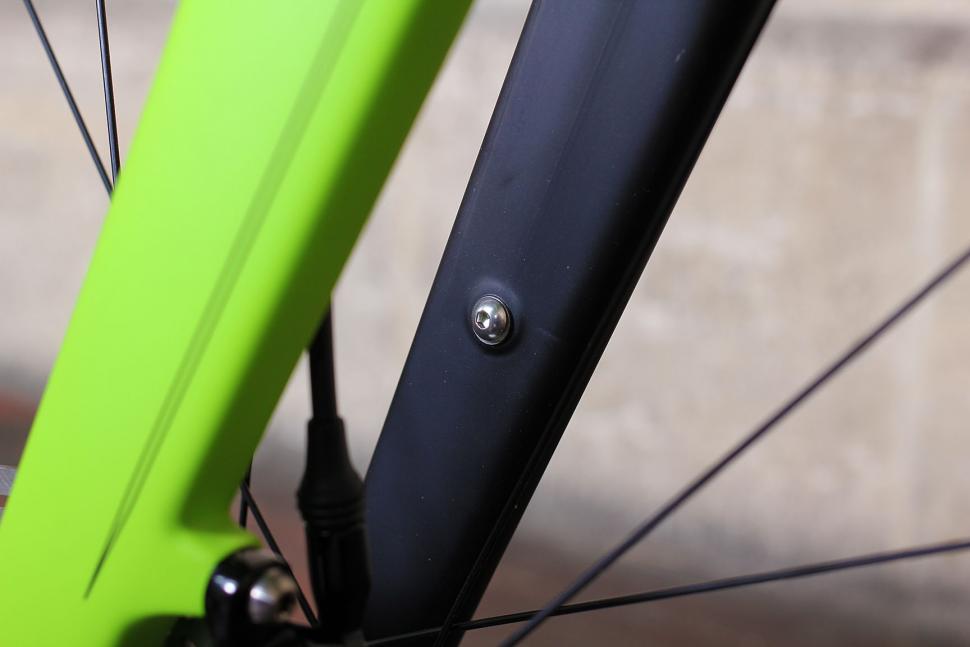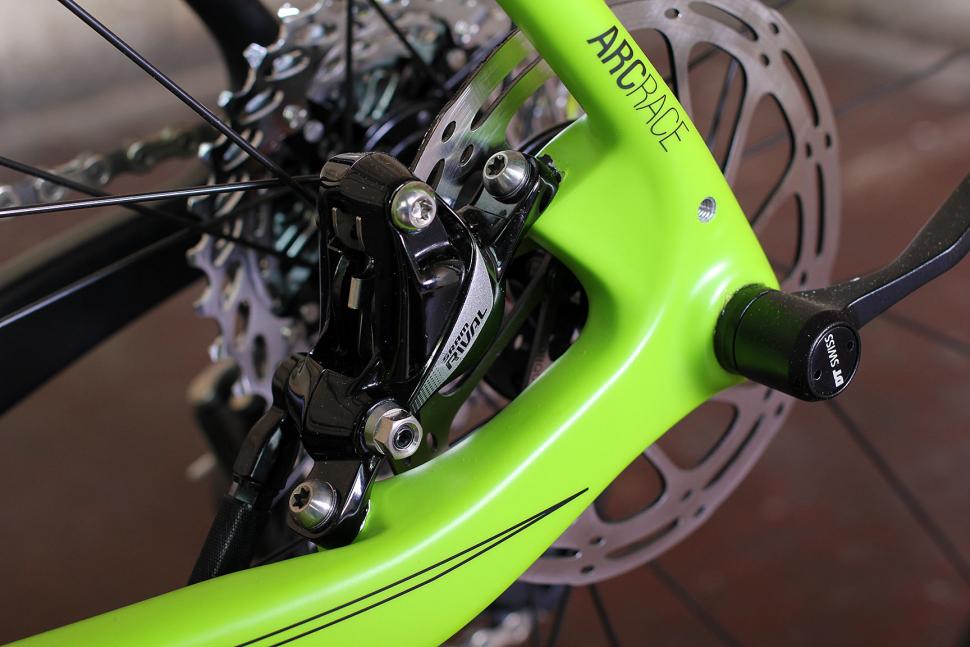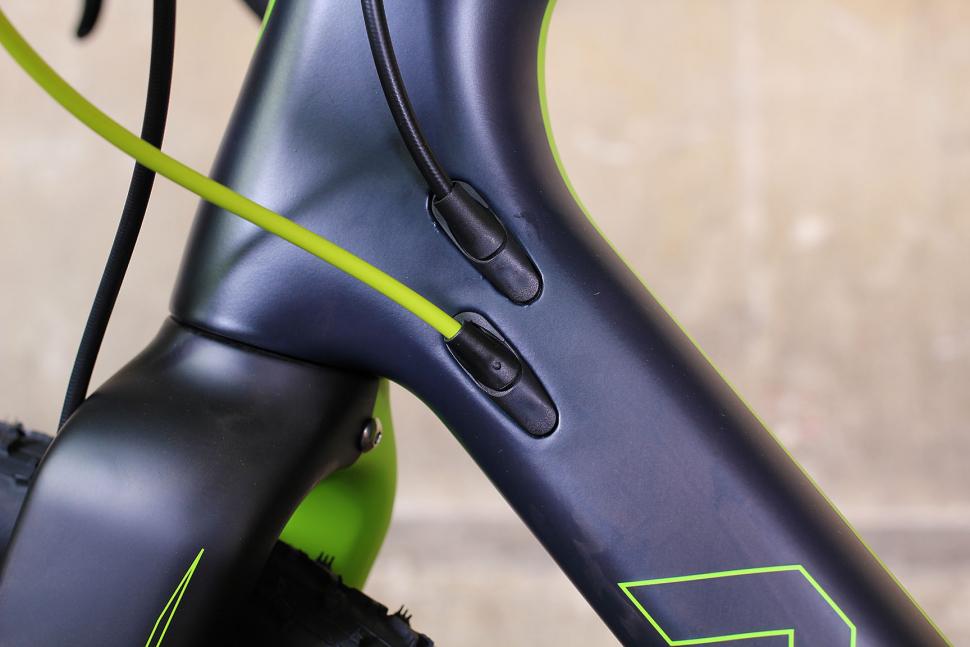- News
- Reviews
- Bikes
- Components
- Bar tape & grips
- Bottom brackets
- Brake & gear cables
- Brake & STI levers
- Brake pads & spares
- Brakes
- Cassettes & freewheels
- Chains
- Chainsets & chainrings
- Derailleurs - front
- Derailleurs - rear
- Forks
- Gear levers & shifters
- Groupsets
- Handlebars & extensions
- Headsets
- Hubs
- Inner tubes
- Pedals
- Quick releases & skewers
- Saddles
- Seatposts
- Stems
- Wheels
- Tyres
- Tubeless valves
- Accessories
- Accessories - misc
- Computer mounts
- Bags
- Bar ends
- Bike bags & cases
- Bottle cages
- Bottles
- Cameras
- Car racks
- Child seats
- Computers
- Glasses
- GPS units
- Helmets
- Lights - front
- Lights - rear
- Lights - sets
- Locks
- Mirrors
- Mudguards
- Racks
- Pumps & CO2 inflators
- Puncture kits
- Reflectives
- Smart watches
- Stands and racks
- Trailers
- Clothing
- Health, fitness and nutrition
- Tools and workshop
- Miscellaneous
- Buyers Guides
- Features
- Forum
- Recommends
- Podcast
news
Just in: Norco Threshold C Rival X1
Canadian firm Norco updated its Threshold cyclocross bike for 2015 and we’ve just received this £1,999 SRAM Rival 1-equipped model to have a play on, because it’s the season for getting muddy and racing around a school playing field after all.
- Buyer's Guide to cyclocross bikes - how to choose the right one for you
What you’re getting for a pound under two grand is a full carbon fibre frame and fork with disc brakes and thru-axles at both ends, clearly demonstrating the company’s mountain bike roots.
Norco has borrowed some tech from its carbon road bike models, namely the ARC Race seat stays. These are small diameter tubes with a bow shape that Norco reckons work like “micro-suspension to dampen fatiguing vibrations.” A bit of comfort on a cyclocross bike is desirable, whether you’re racing or riding for fun.
It’s likely the Threshold will take some abuse if you take it properly off-road, so Norco has wisely reinforced the carbon fibre layup with an ArmorLite resin which it claims provides improved impact resistance. Despite that reinforcement work, the frame has a sub-1kg weight so it’s ideal for building into a lightweight race bike. The frame has size-specific tubing profiles as well.
Norco has gone with a 15mm front and 142x12mm rear thru-axle, both borrowed directly from the mountain bike world and about as close to a ‘standard’ in the new disc-equipped road and cycling landscape. Cable routeing, well that’s all internal and is compatible with most gear and brake configurations you could care to build the frame up with.
Providing a bit of versatility is the addition of mudguard mounts that will ensure the Threshold will appeal to those cyclists that still fancy a cyclocross bike as being ideal for winter cycling with a bit of commuting and winter training thrown into the mix.
As it happens, this model comes with SRAM’s Rival 1 groupset, which ditches front mech and combines a wide-range cassette with a specially modified rear mech and chainring to prevent the chain falling off. Norco has combined a 42t chainring with an 11-32T cassette - it’ll be interesting to see how that combination works off-road and in a cyclocross race.
The brakes are Rival 1 hydraulic discs with a 160mm front rotor and 140mm rear rotor, odd to see mixed size rotors on a road bike, but showing Norco’s mountain bike influence as that is standard practice on mountain bikes.
Norco has specced A-Class CXD4 wheels with sealed bearing hubs and tubeless-ready rims, fitted with Clement Crusade PDX 33mm tyres, which aren’t tubeless-ready. The list of tubeless cyclocross tyres is growing slowly, so there is a bit of a choice if you wanted to banish the inner tubes.
Finishing kit, but which we mean handlebars, stem, saddle and seat post, is all Norco brand kit. The Cross Race saddle has chromoly rails and the handlebar has a compact bend and the seat post, in 27.2mm diameter, has a CNC machined head.
The bike in for test is a 58cm, one of five sizes available, and has a 72.5-degree head angle, 572.5mm effective top tube, 165mm head tube, 67.5mm bottom bracket drop and a 1029mm wheelbase. The stack is 589mm and reach is 398mm.
More at www.evanscycles.com/products/norco/threshold-rival-1-2016-cyclocross-bik...
David worked on the road.cc tech team from 2012-2020. Previously he was editor of Bikemagic.com and before that staff writer at RCUK. He's a seasoned cyclist of all disciplines, from road to mountain biking, touring to cyclo-cross, he only wishes he had time to ride them all. He's mildly competitive, though he'll never admit it, and is a frequent road racer but is too lazy to do really well. He currently resides in the Cotswolds, and you can now find him over on his own YouTube channel David Arthur - Just Ride Bikes.
Latest Comments
- Destroyer666 3 hours 28 min ago
Anodizing the aluminium is also for corrosion resistance and therefore enhances the longevity of the rims while this is not really a case for...
- bobbinogs 4 hours 42 min ago
Wheelsmith has always been very good for me. Malcolm was always very opinionated so I got bored with him telling me I should be riding tubeless,...
- Terry Hutt 5 hours 1 min ago
I assume you can carry an e-bike battery on the tube if you leave the bike at home. ...
- chrisonabike 6 hours 3 min ago
I love it - it's a roundabout with a sculpture of a roundabout on its desk!
- cmedred 6 hours 4 min ago
From the position of the cyclist when the video starts and the position of the bike later, it looks highly unlikely that the cyclist went "into the...
- Rendel Harris 6 hours 10 min ago
To rhyme with design. I wondered this myself so looked it up a while ago, according to the founder Micki Kozuschek he and his team had a few...
- Rendel Harris 7 hours 4 min ago
It's not being pedantic at all, careless driving is successfully prosecuted (and I have been in court more than once when a driver has been...
- HLaB 7 hours 27 min ago
It's hopefully an urban myth but I heard it was designed that way on purpose, so the cyclepath captured any flooding and the busway would remain clear
- mdavidford 7 hours 30 min ago
I should imagine eating chopsticks anywhere could be potentially rather perilous.
- Rendel Harris 7 hours 48 min ago
When The Badger stopped for protesters (albeit dockworkers rather than farmers) it was their stress gauges rather than his that would have been...



































Add new comment
8 comments
yeah, dave's talking about it being overgeared at the top end there. you don't need a 50x11 gear - or anything remotely near it - for cx racing. i'd say for general use the norco is overgeared at the other end. and yes, i think an 11-36 would have been a better choice on this bike for the reasons stated above. if you're going 1x, you might as well give yourself some extra range at the back that's not available to a 2x setup. but more on that in the review
I think you mean overgeared, not undergeared, by the way
more on the gear range in the review. but i'd say as specced it's certainly more set up for racing than anything else, mudguard eyelets or no. to get anywhere near the range of a compact double you really need to be looking at the 10-40 cassette which requires an XD freehub. You could go up to a 36 on this with the wheels as supplied. 1x is undoubtedly better for racing UK-conditions 'cross though, as anyone that fought through the quagmire that was Middlemoor on Sunday will attest. Last thing you need is two chainrings and a front mech filling up with mud and grass...
I can excuse it on this bike as it specifally suits racing, my point was more a criticism of the X1 bikes in general. You don't need the X1 to do 11-32, any groupset can handle that range. If they're trying to save money (the big 10-42 costing £200+ and needing a compatible hub), at least an 11-36 would be a better choice for most of us buying bikes for multiple uses.
I actually have a 1x 11-32 on my commuter, but I've got a 39t on the front because I have to regularly pedal up Wimbledon hill (anyone that's done RideLondon knows the one I mean).
Edit: It's a shame editing a comment changes the order they appear, it can make a thread confusing. However, I just couldn't live with the fact that I confused pedal with peddle last night.
Well that settles that, then.
I definitely understand taller&tigher gears for out-and-out race bikes and single rings on dirt. I still think as with most CX race bikes that's too tight for anything but high-level CX racing, which may well be the point. I look forward to the review.
Thanks for the clarification. I had thought that overgeared meant "too wide a gear range" and undergeared meant the opposite, as per:
Not that impressed with so many of the new Sram X1 bikes appearing with just an 11-32 cassette.
This is a cross bike, not a mountain bike. Believe it or not there are actually sacrificies associated with a bigger gear range.
It depends. For strict CX, the 42-32, which matches the 36/28 found on many CX race bikes seems apt. And as you stated, wider gearing carries its own issues.
But, I'll also agree with bikebot as I'm of the opinion most top-end bikes, particularly CX bikes, still come fairly undergeared for amateurs. Even at a fairly old-school get-up-and-grind cadence of 60rpm, you're going at about 10.22 km/h on a 35.6" gear, which on a 10% gradient should work out to about 3.4 W/kg on smooth tarmac - more than a bit more than that off-road. That would likely put many amateurs deep into the red on anything over a couple of minutes of steep climbing, particularly in the mud, particularly on a longish (for CX) hill like, say, the Koppenberg.
Not to mention that that the built-in compliance, endurance geometry and mudguard eyelets point to a bike not solely intended as an out-and-out CX-race bike. In which case, 42/32 again matches the same 36/28 many World-Tour professionals use for medium-to-high mountain stages. And which, to be fair, that also does seem to be found on many racier road bikes currently for sale. Exactly how that's not massively undergeared for weak-kneed amateurs going on training or "adventure" rides (particularly those on gravel or fire-roads where the path often pitches straight up instead of snaking around), however, is completely and utterly beyond me.